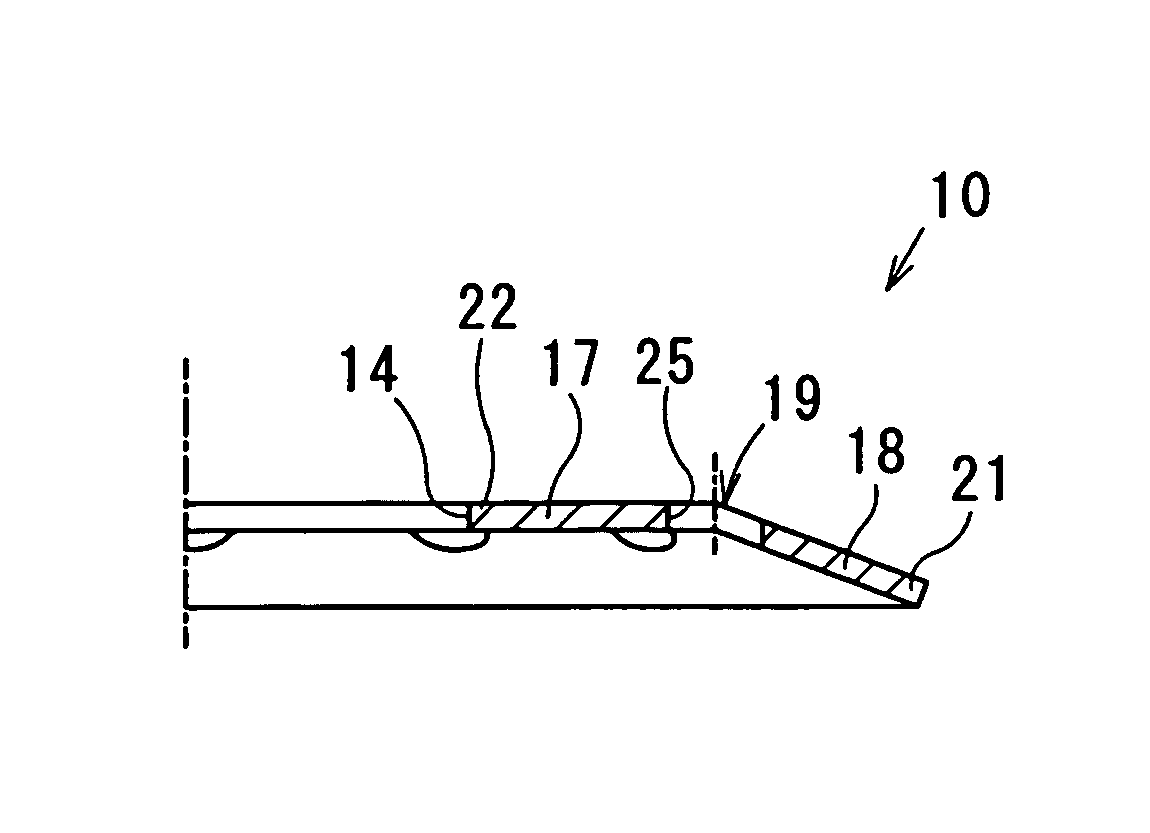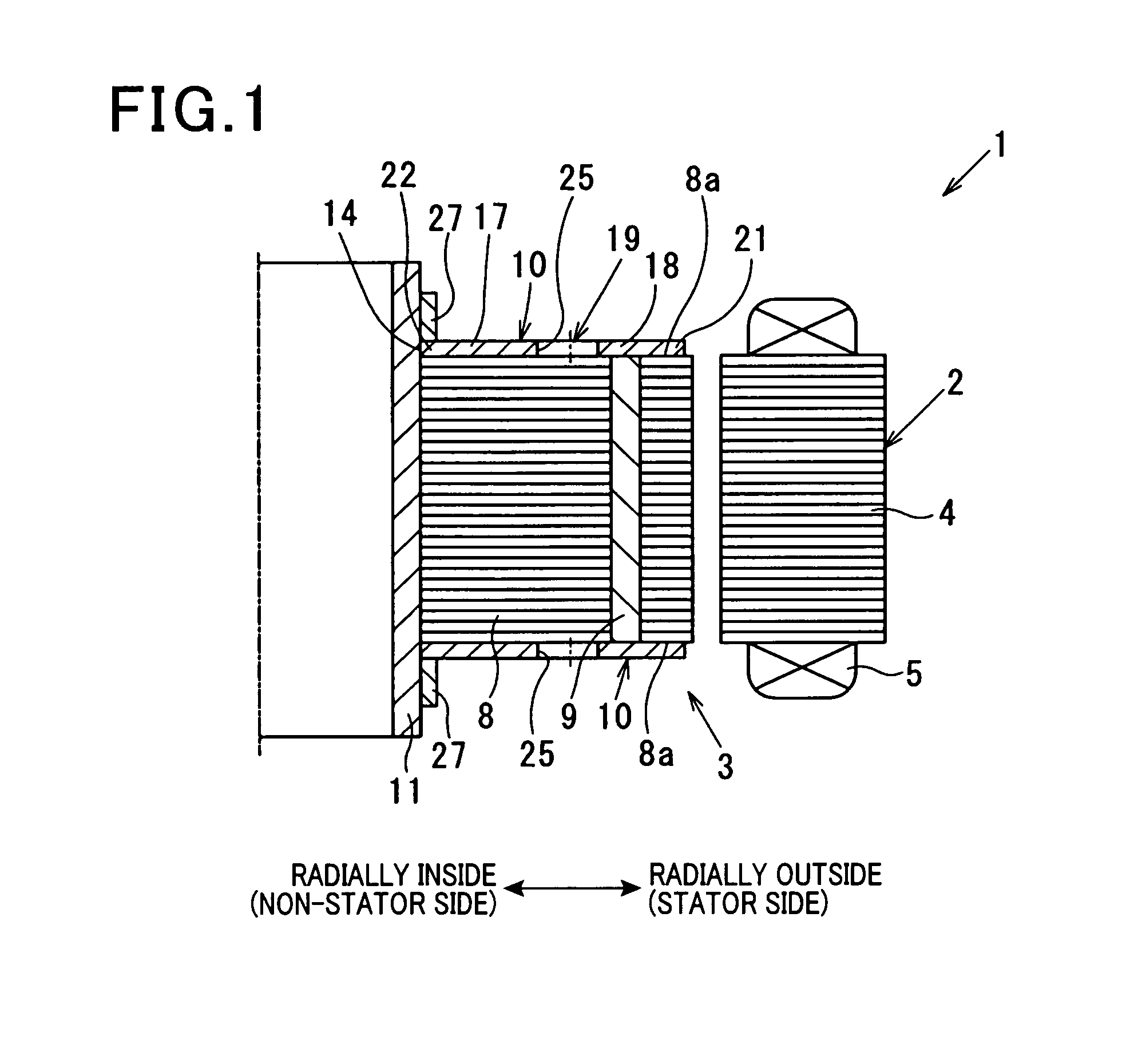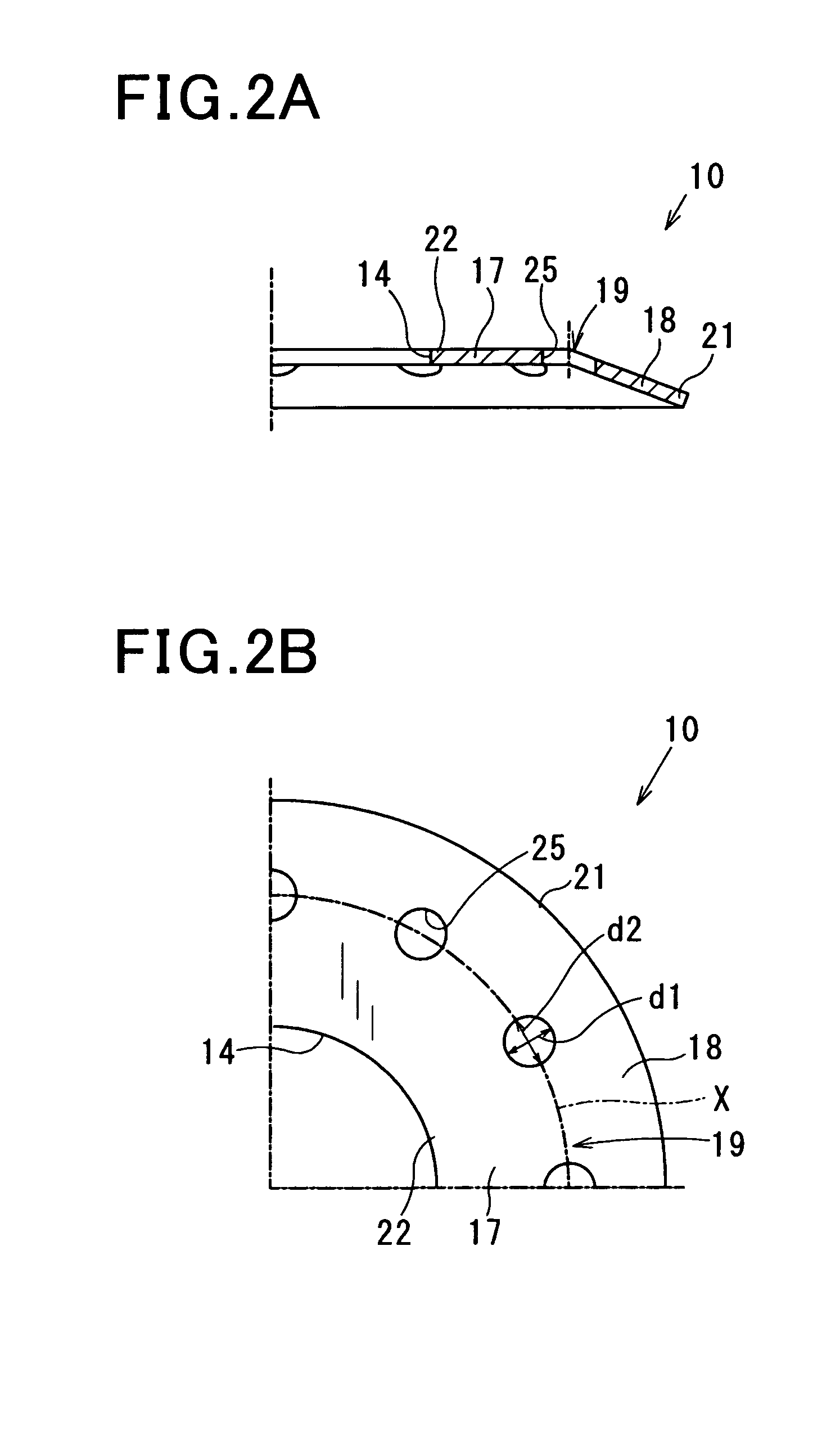Rotor for electric rotating machine and method of manufacturing the same
a technology of electric rotating machines and rotors, which is applied in the direction of manufacturing stator/rotor bodies, magnetic circuit rotating parts, magnetic circuit shape/form/construction, etc., can solve the problems of high impact resistance (or shock resistance) and difficulty in ensuring high durability of end plates, and achieves high joining strength and reliable performance of lock seaming process.
- Summary
- Abstract
- Description
- Claims
- Application Information
AI Technical Summary
Benefits of technology
Problems solved by technology
Method used
Image
Examples
first embodiment
[First Embodiment]
[0060]FIG. 1 shows the overall configuration of an electric rotating machine 1 which includes a rotor 3 according to a first embodiment.
[0061]In this embodiment, the electric rotating machine 1 is configured as a motor generator that can function both as an electric motor and as an electric generator in, for example, a hybrid or electric vehicle.
[0062]As shown in FIG. 1, the electric rotating machine 1 includes a hollow cylindrical stator 2 and the rotor 3 that is rotatably disposed radially inside of the stator2. That is to say, in the present embodiment, the electric rotating machine 1 is of an inner rotor type. In addition, it should be noted that for the sake of simplicity, only half of the electric rotating machine 1 is shown in FIG. 1.
[0063]The stator 2 includes a stator core 4 and a three-phase stator coil 5. The stator core 4 is formed, by laminating a plurality of magnetic steel sheets, into a hollow cylindrical shape. The stator coil 5 is mounted on the s...
second embodiment
[Second Embodiment]
[0100]This embodiment illustrates a rotor 3 which has a similar configuration to the rotor 3 according to the first embodiment; accordingly, only the differences therebetween will be described hereinafter.
[0101]In the first embodiment, for each of the end plates 10, each of the through-holes 25 of the end plate 10 has the substantially circular shape. Moreover, all the diameters of the through-holes 25 are equal to each other (see FIG. 2B).
[0102]In comparison, in the present embodiment, as shown in FIG. 5A, for each of the end plates 10, each of the through-holes 25 of the end plate 10 also has a substantially circular shape. However, the diameters of the through-holes 25 vary according to the circumferential positions of the through-holes 25.
[0103]Specifically, in the present embodiment, the rotor 3 includes a plurality of auxiliary magnetic poles 3B in addition to the magnetic poles 3A formed by the permanent magnets 9 (to be referred to as main magnetic poles 3...
third embodiment
[Third Embodiment]
[0115]This embodiment illustrates a rotor 3 which has a similar configuration to the rotor 3 according to the first embodiment; accordingly, only the differences therebetween will be described hereinafter.
[0116]In the first embodiment, for each of the end plates 10, in the natural state of the end plate 10 before being mounted to the corresponding axial end face 8a of the rotor core 8, the proximal portion 17 of the end plate 10 extends, from the opening edges of the through-hole 14 of the end plate 10, radially outward so as to be parallel to the corresponding axial end face 8a of the rotor core 8. On the other hand, the distal portion 18 of the end plate 10 extends, on the radially outside of the proximal portion 17, radially outward so as to be inclined axially inward with respect to the corresponding axial end face 8a of the rotor core 8 (see FIG. 2A).
[0117]In comparison, in the present embodiment, as shown in FIG. 7A, for each of the end plates 10, in the natu...
PUM
| Property | Measurement | Unit |
|---|---|---|
| deflection stress | aaaaa | aaaaa |
| deflection stress | aaaaa | aaaaa |
| angle | aaaaa | aaaaa |
Abstract
Description
Claims
Application Information
 Login to View More
Login to View More - R&D
- Intellectual Property
- Life Sciences
- Materials
- Tech Scout
- Unparalleled Data Quality
- Higher Quality Content
- 60% Fewer Hallucinations
Browse by: Latest US Patents, China's latest patents, Technical Efficacy Thesaurus, Application Domain, Technology Topic, Popular Technical Reports.
© 2025 PatSnap. All rights reserved.Legal|Privacy policy|Modern Slavery Act Transparency Statement|Sitemap|About US| Contact US: help@patsnap.com



